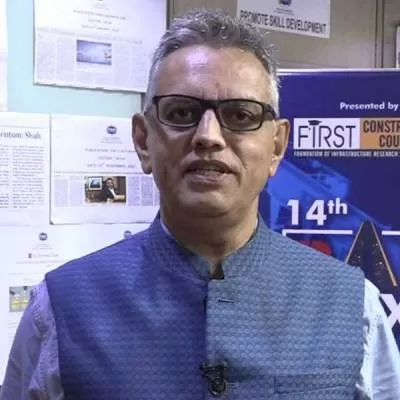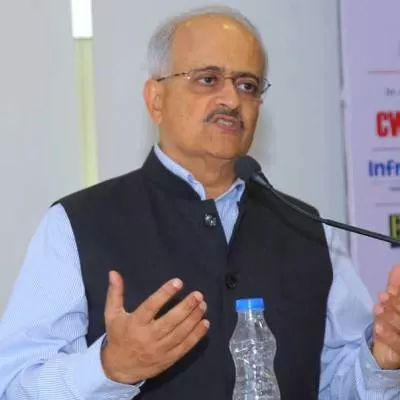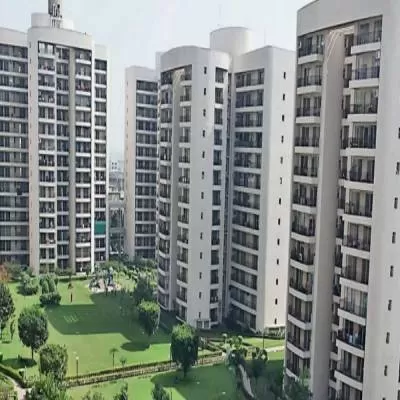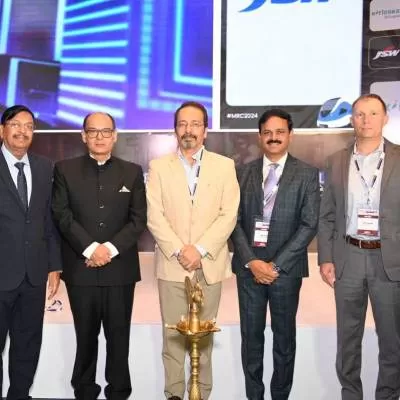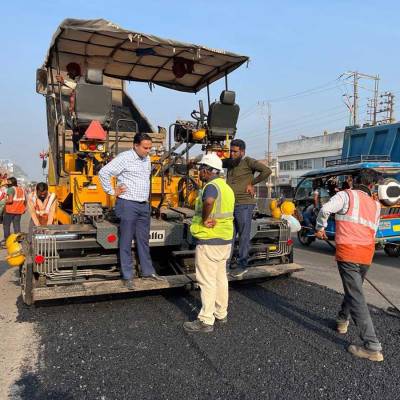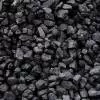- Home
- Real Estate
- The essence of copper
The essence of copper
Historically, copper is one of the oldest known metals - other metals such as steel and aluminium were introduced much later. In the modern era, this mature material has recently been incorporated in the roofing and cladding of structures. Vijaynath Shetty, Director, Vijaynath Interiors & Exteriors, speaks to AHLAM RAIS on the applications, profits and future prospects of using copper in the construction industry.
Applications
Copper is a soft and malleable metal and is used in the construction industry for cladding, roofing and interiors. For the cladding and roofing segment, it can be rolled out into sheets that comprise 100 per cent copper or an alloy in the form of a mix of other metals including brass, bronze, tin, zinc and aluminium. Together, all these elements provide different colours to sheets. It can also be utilised in the interiors in the form of laminates and designer jaalis. Copper is compatible with all kinds of metals and is used for different aesthetic purposes.
Worldwide appeal
In India, the use of copper in the roofing and cladding segment predominantly started about two to three years ago. In the Novotel Hotel in Lavassa, this material has been incorporated in roofing and cladding across about 15,000 sq m.
It has also been used over the concrete dome in the form of cladding at The Leela hotel in Delhi. And in Bhoothanatheshwara Temple in Mangalore, the material has been utilised to clad the temple's dome. These examples reflect the rise in demand for copper. A unique feature of this material is that it is a natural element and blends well with old structures. In Central Europe, copper as a material has been popular in the construction industry for the past 30-40 years. It has been used in the construction of museums, churches, old libraries, etc.
Plus points
Being soft and malleable, copper can be rolled into thin sheets of 0.5 mm to 1 mm in thickness; this proves beneficial for cladding of structures. It can also be folded and moulded on site and, hence, panel designing can be carried out on site. Thus, copper sheets as long as 20 m can be transported with ease as in the case of steel, this is not possible. Another major advantage is that it does not decay. A thin green layer of oxidisation is formed on copper that prevents further decay or erosion of the metal. Through this, its thickness does not reduce unlike steel, where the material corrodes and eventually vanishes over a period of time. An interesting example is The Statue of Liberty that was created in Paris in the 1880s by using copper with a thickness of 3/32 inch. Not many people know that this symbol of freedom once shined in the copper colour and has over a period of time turned green. What's more, copper has a phenomenal long life of more than 100 years and is sustainable as it is recyclable in nature. Thus, it scores much higher than other contemporary metals on sustainability and environmental norms.
Costs and drawbacks
A single thin sheet of copper costs about Rs 800-1,000 per sq ft. However, the cost differs depending on the alloy and thickness of the sheet. In terms of strength, this material fares much lower than steel but there are certain engineering methods through which its built-up strength can be increased.
Another drawback is that though the material is available in India, we do not produce high-grade copper, which is essential to produce fine sheets. Hence, it has to be imported. Lastly, copper is expensive compared to other materials.
Alternative material
Copper is an alternative to zinc. Like copper, it is also soft, malleable and ductile and has been used in roofing and cladding for centuries.
It is non-oxidising and also has a long life. The only difference is the colour that it offers; it is either blackish or greyish. Pricewise, it is slightly lower compared to copper. Despite these advantages, why should one still opt for copper.
Budding material
Copper still has to be popularised in the Indian market. This material has to be locally developed and its cost will then be came down.
Nishant Gupta, Associate Architect, Architect Hafeez Contractor, shares his experience with copper.
"We have used copper in an art installation in the entrance lobby at Parinee Crescenzo, BKC in Mumbai. We used this specific material for its ability to be moulded into an interesting organic art installation. Another interesting aspect for which we have used the material is its appearance, natural colour and texture. The primary benefits of using copper include sturdiness, resilience and its corrosion free nature."
To share your insight on an interesting construction material, write in at feedback@ASAPPmedia.com
Yet to be popularised in the Indian Market, this metal has recently been recognised as apt for roofing and cladding of structures. Historically, copper is one of the oldest known metals - other metals such as steel and aluminium were introduced much later. In the modern era, this mature material has recently been incorporated in the roofing and cladding of structures. Vijaynath Shetty, Director, Vijaynath Interiors & Exteriors, speaks to AHLAM RAIS on the applications, profits and future prospects of using copper in the construction industry. Applications Copper is a soft and malleable metal and is used in the construction industry for cladding, roofing and interiors. For the cladding and roofing segment, it can be rolled out into sheets that comprise 100 per cent copper or an alloy in the form of a mix of other metals including brass, bronze, tin, zinc and aluminium. Together, all these elements provide different colours to sheets. It can also be utilised in the interiors in the form of laminates and designer jaalis. Copper is compatible with all kinds of metals and is used for different aesthetic purposes. Worldwide appeal In India, the use of copper in the roofing and cladding segment predominantly started about two to three years ago. In the Novotel Hotel in Lavassa, this material has been incorporated in roofing and cladding across about 15,000 sq m. It has also been used over the concrete dome in the form of cladding at The Leela hotel in Delhi. And in Bhoothanatheshwara Temple in Mangalore, the material has been utilised to clad the temple's dome. These examples reflect the rise in demand for copper. A unique feature of this material is that it is a natural element and blends well with old structures. In Central Europe, copper as a material has been popular in the construction industry for the past 30-40 years. It has been used in the construction of museums, churches, old libraries, etc. Plus points Being soft and malleable, copper can be rolled into thin sheets of 0.5 mm to 1 mm in thickness; this proves beneficial for cladding of structures. It can also be folded and moulded on site and, hence, panel designing can be carried out on site. Thus, copper sheets as long as 20 m can be transported with ease as in the case of steel, this is not possible. Another major advantage is that it does not decay. A thin green layer of oxidisation is formed on copper that prevents further decay or erosion of the metal. Through this, its thickness does not reduce unlike steel, where the material corrodes and eventually vanishes over a period of time. An interesting example is The Statue of Liberty that was created in Paris in the 1880s by using copper with a thickness of 3/32 inch. Not many people know that this symbol of freedom once shined in the copper colour and has over a period of time turned green. What's more, copper has a phenomenal long life of more than 100 years and is sustainable as it is recyclable in nature. Thus, it scores much higher than other contemporary metals on sustainability and environmental norms. Costs and drawbacks A single thin sheet of copper costs about Rs 800-1,000 per sq ft. However, the cost differs depending on the alloy and thickness of the sheet. In terms of strength, this material fares much lower than steel but there are certain engineering methods through which its built-up strength can be increased. Another drawback is that though the material is available in India, we do not produce high-grade copper, which is essential to produce fine sheets. Hence, it has to be imported. Lastly, copper is expensive compared to other materials. Alternative material Copper is an alternative to zinc. Like copper, it is also soft, malleable and ductile and has been used in roofing and cladding for centuries. It is non-oxidising and also has a long life. The only difference is the colour that it offers; it is either blackish or greyish. Pricewise, it is slightly lower compared to copper. Despite these advantages, why should one still opt for copper. Budding material Copper still has to be popularised in the Indian market. This material has to be locally developed and its cost will then be came down. Nishant Gupta, Associate Architect, Architect Hafeez Contractor, shares his experience with copper. "We have used copper in an art installation in the entrance lobby at Parinee Crescenzo, BKC in Mumbai. We used this specific material for its ability to be moulded into an interesting organic art installation. Another interesting aspect for which we have used the material is its appearance, natural colour and texture. The primary benefits of using copper include sturdiness, resilience and its corrosion free nature." To share your insight on an interesting construction material, write in at feedback@ASAPPmedia.com



